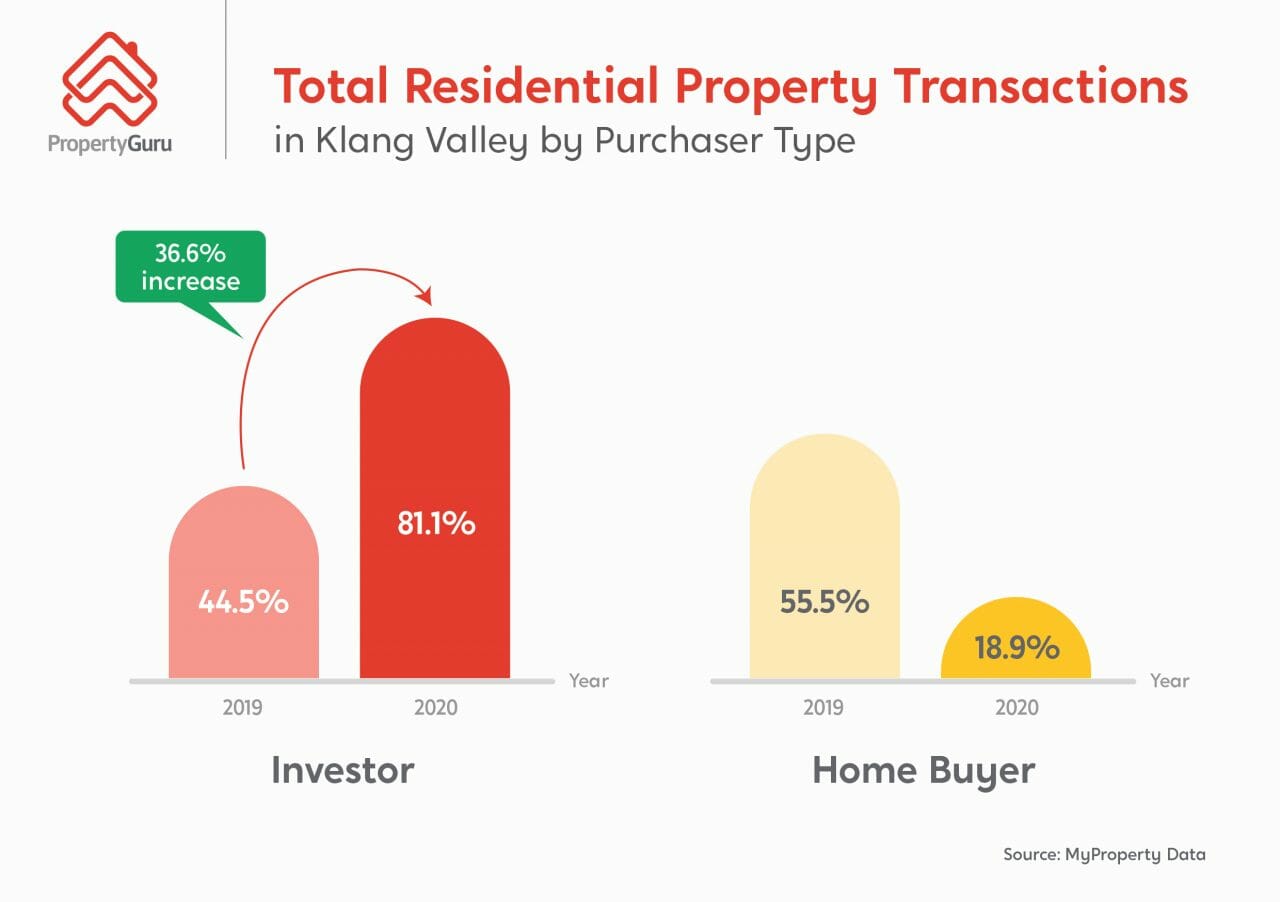MyProperty Data, an online property data company under PropertyGuru has revealed that 81.1 percent of investors dominated the residential property purchases in the Klang Valley in 2020 and interest is turning towards subsale properties.
Joe Hock Thor, Managing Director, MyProperty Data shared, “The subsale residential property market in Malaysia has seen steady growth in the last few years, and this upward trend is further accelerated by the effects of the pandemic. There is a rise in overall interest in the secondary market as some property owners are selling their assets at lower prices to maintain liquidity, creating opportunities for investors to acquire them below market value.”
The Real Property Gains Tax exemption also the reason some investors to cash in their existing assets and make a profit. This is reflected in the spike in the average number of subsale listings tracked on PropertyGuru.com.my, which grew by 21.3 percent between 2019 to 2021.
Additionally, the data showed economic downturn in 2020 has led to a 47.2 percent drop in total number of residential property transactions in Klang Valley.
However, the impact is most visible among first-time home purchasers, who used to account for 55.5 percent of overall property transactions in the area in 2019 but have subsequently decreased to 18.9 percent in 2020. Meanwhile, investor demand for residential properties in the area continues strong, with a 36.6 percent year-on-year increase in investor activity from 2019 to 2020.
In 2020, the property market in Klang Valley recorded the lowest new development purchase in the last five years, with a 90.6 percent and 38 percent YoY decrease in the number of transactions made by first-time home buyers and investors, respectively. On the other hand, the total number of transactions in 2020 for subsale properties was the lowest for first-time home buyers (79.4 percent YoY decrease), but the highest for investors (9.6 percent YoY increase), in the same five-year period.
This change in purchase behaviors is more prominent among landed properties. Between 2016 and 2019, the landed property transactions from subsale and new development properties are split at approximately 70 percent and 30 percent respectively. This has shifted to 84 percent and 16 percent respectively in 2020.
Meanwhile, for high-rise property transactions, the split between sub-sale and new development properties have remained consistent at around 80 percent and 20 percent respectively across the last five years.
“To help spur the industry and to increase homeownership, there need to be greater incentives offered to first-time homebuyers – be it attractive rebates from developers or assistance from the government,” Joe said.
The government’s recent decision to extend the residential home stamp duty exemption scheme under the Home Ownership Campaign until this year-end, will also alleviate the burden of home buyers and support the sector’s recovery.
“Separately, the pandemic has presented a prime opportunity for investors to capitalise on the discounted prices of properties, the various incentives available, as well as the current low-interest rate environment to pick up quality assets for the future. With properties often considered as a hedge against inflation, these assets may offer a long-term boon with the eventual market recovery and stabilisation,” he added.










